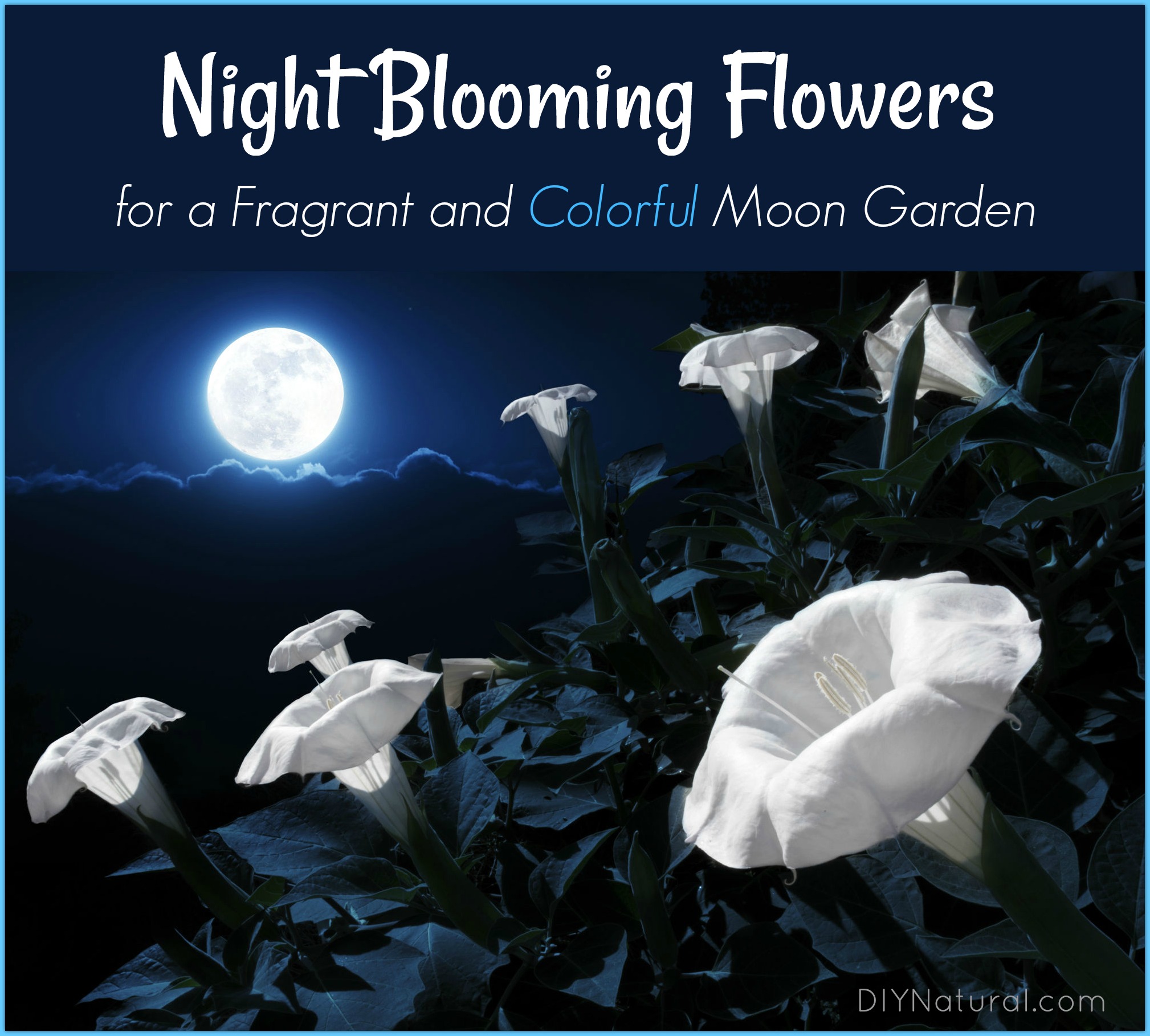
This list of night-blooming flowers will help you create a beautiful and fragrant moon garden! Some of the most exotic scented flowers are night bloomers!
My Old Moon Garden
For years it has been my dream to create a themed moon garden here at the farm. White bloomers look cool under a full moon so, when we started one a few years ago, I focused on white bloomers. That original design was a mistake!
This year, as part of our vegetable garden, I planted a flower from my childhood. We put in Four-O-Clock seed, the same flowers I remember in my grandmother’s garden. I loved the large seeds that were always scattered in the bed and I loved the shimmering flowers that only opened late in the day. These flowers are shrouded in the mystery of their specific blooming pattern, and also notable because of the exotic, spicy fragrance they emit when open.
My New Moon Garden
Growing these plants again this year reminded me that a moon garden should not be just about white blooms. Many of the night blooming flowers around the world do happen to be white. It is believed that this is because the plant does not need to exert any effort in attracting pollinators with a lot of showy color. Instead, the pollination strategy alone is to attract insects that are only active at night. Because these plants are working in the dark, they do invest in a strategy that we can all appreciate; their scent! Some of the most exotic scented flowers are night blooming flowers. It is my dream to sit on my back patio under a full moon with the scent of nicotiana, gardenia, and jasmine washing over me as I enjoy a glass of wine with my husband.
This fall we will be ripping out my short-sighted plan for the old moon garden. We have a new plan and it involves many of the following list of night blooming flowers. I thought I would share them with you in case you are similarly inspired to plant for the night pollinators and fill your evening with heavenly fragrance:
Night Blooming Flowers for a Moon Garden
Moonflower (Ipomoea alba): hardy to zones 9-11
Night Gladiolus (Gladiolus tristis): hardy to zones 7-11
Nicotiana (Nicotiana alata): this grows as an annual that self-seeds
Night Blooming Jasmine (Cestrum nocturnum): hardy to zone 8
Mock Orange (Philadelphus spp.): hardy in zones 4-7
Evening Stock (Matthiola incana): this grows as an annual that self-seeds
Chocolate Daisy (Berlandiera lyrata): hardy to zone 5
Casablanca Lily (Lilium oriental): hardy in zones 3-8
Brugmansia (Brugmansia spp.): hardy in zones 9-11
Datura (Datura meteloides): hardy to zone 6
Tuberose (Polianthes tuberosa): hardy to zone 8
Night Phlox (Zaluzianskya capensis): hardy in zones 8-11
Night Blooming Cereus (Paniocereus gregg): pollinated by sphinx moths and bats, this is hardy in zones 10-11
Four-O-Clocks (Mirabilis jalapa): hardy in zones 8-11, otherwise you can dig their tubers and store the over winter or allow them to self-seed.
Evening Primrose (Oenothera biennis): pollinated by the sphinx moth and hardy in zones 3-11
Do you plant night blooming flowers? If so, which ones?
*******



Hi I’m happy to see this topic is also on others minds!, I live in fl. And started thinking of growing nite bloomers with scent back in may/ jumne, my moonflowers didn’t grow ( I had them to l8ng before planting I guess, my four o clocks just started to bloom!! Pretty yellow & pink ones so far!, I really want some moonfl. , & nite Jasmine once again, so will be investigating when’s the best time here for moonflowers, pics. Look Beautiful of them, thank you for sharing with tips & ideas!
I HAVE ALWAYS GROWN O
FoUR OCLOCKS AND MOON VINES. LOVE THEM I LOVE THE NIGHT AND EARLY MORNING
Where do I find night blooming flowers
My 4 o clocks don’t smell.
Thank you sooooooooooooo much for this insight. I have some four-o’clocks blooming that I got from a 92-year old friends’ yard, and have never gone out to smell them. I did not know they had a smell!! but I can assure you will be going out to smell them to night.
Do these night blooming flowers require sun during the day, or the moon at night? Will they grow under a very large Cedrus deodara pine?
Any ideas why my moonflowers vines haven’t started blooming here at the end of August?
They are known to wait until late summer or fall to bloom so it’s “possible” that due to the time you planted it’s just not ready yet. The other problem could be if it is getting too much shade, they don’t bloom well unless they’re in full sunlight. If you don’t have one of those two conditions, I’m tapped out and maybe someone else has some ideas!
I just want to make sure you know what datura is and what it can do. As beautiful as it is, I would never advertise it as a garden addition.
JJ, I am well aware of the medicinal and folkloric use of datura throughout the world. That is a different subject, and one that I would not intentionally broach here, as use of datura should be strictly overseen by a professional. To avoid its use in the garden because of its history would be a shame. The variety that grows in my garden wild, Jimson weed, is an important companion plant and beautiful to boot. It grows in both my food garden and in those areas, such as I’m writing about above, that are strictly for beauty’s sake and not for eating.